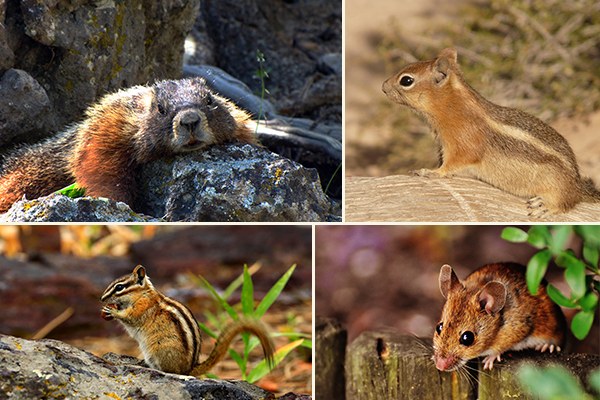
One of the more unusual pieces of climbing jargon, the word ‘snafflehound’ fails to strike fear into the heart of the uninitiated. However, snafflehounds have ruined more than a few climbers’ days, and for good reason.
A snafflehound is any kind of rodent that feasts on climbing gear. This can include mice, rats, squirrels, and even marmots. The catch-all term was popularized by legendary alpinist and Mountaineers member Fred Becky. Snafflehounds are attracted to the salty sweat in your boots left at the base of a climb, and take the opportunity to gnaw on whatever else they find. Climbers tell tales of snafflehounds raiding food, gnawing through ropes, chomping holes in (occupied!) sleeping bags, and chewing ropes in use. You can even find two places named after these mischievous rodentia - Snafflehound Ledge, on the BeckeyDavis route of Prusik Peak, and Snafflehound Spire, located in the Bugaboos in eastern British Columbia. Though their alpine reputation veers into the stuff of legend, they’re so commonplace that you have certainly seen a potential snafflehound - even if it hasn’t had the opportunity to earn the title (yet).
Snafflehounds of the Northwest
Squirrels
Though we typically think of tree squirrels, ground squirrels are more likely to be snafflehounds as they live in subalpine areas that are minimally forested. The Cascade goldenmantled ground squirrel has an appetite benefitting its robust name, and can be seen popping its head up from rocky outcroppings and eyeing your perfectly flaked rope.
Mice and Rats
Mice and rats can be found almost anywhere, and for good reason. These small, sturdy creatures can easily find shelter in the forest as well as alpine environments, and have been known to venture far from home in search of lunch. They’re often difficult to dissuade from their chosen target, and are the inspiration for the ‘rodent hang’ food storage method. They’re the most likely creatures to become snafflehounds.
Chipmunks
Chipmunks are also bold inhabitants of the Cascades and beyond, as many of us have learned at lunch after a long hike or climb. The most common local chipmunk is the yellow pine chipmunk, although all of them will attempt to sneak into your pack when you have your back turned.
Marmots
As some of the largest and most-admired rodents of the region, marmots make for an impressive snafflehound. Likely the biggest creature you’ll see gnawing on your gear, when marmots strike their damage can be substantial. Fortunately they choose to spend most of their time in subalpine regions, enjoying large amounts of vegetation below tree line.
This article originally appeared in our Summer 2019 issue of Mountaineer Magazine. To view the original article in magazine form and read more stories from our publication, click here.
Add a comment
Log in to add comments.Yea, 2 weeks ago one of those pack rats bit a chunk out of a climbers glove on Mt Cruiser at a belay station when he reached behind the webbing. And another one that same trip destroyed our rope at camp after the climb, turned our new 60m rope into a 40m.
 Hailey Oppelt
Hailey Oppelt